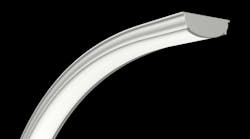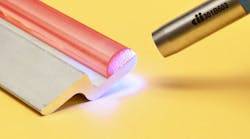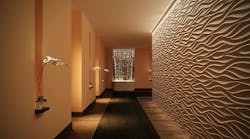Date Announced: 01 Jan 2009 Source: OSRAM1) What does this EU directive govern exactly?This new EU directive sets minimum requirements for domestic lighting. This means that, as of 1 September 2009, high-energy bulbs can no longer be circulated in the EU for use in private households. This is with a view to protecting the climate in the EU. These bulbs will gradually be withdrawn until 2012. The EU directive defines exactly which bulbs will no longer be able to be sold and when. This primarily affects the traditional light bulb. For example, as of 1 September 2009, there will be no more frosted lamps, except for frosted energy saving lamps (CFLi) with energy efficiency class A. Also light bulbs with 80 Watts or more will be banned as of this date. Furthermore this new directive sets new packaging and quality requirements for the benefit of Europe´s consumers.2) What is the point of that?This new EU directive is part of a package of measures from the EU which aims to significantly reduce the energy consumed by electrical devices. The primary aim of this directive is to protect the environment by reducing CO2 emissions. But it will also benefit the consumers’ pockets. Conventional light bulbs really eat electricity. Only 5 % of the energy they consume is used to generate light. Light bulbs mainly convert the remaining 95 % of the energy into heat. Back in 1985, energy saving bulbs were launched which save up to 80% energy, and therefore CO2, compared to conventional bulbs. So the potential for saving is enormous. And if it uses less energy, it also saves money.3) What is the actual benefit for the environment?Over 1/3 of the electricity used worldwide for lighting can be saved. These savings of over 900 billion kWh of electric power would lead to a reduction in global emissions of more than 450 million tons of CO2.4) What will actually change for the consumers?As of 1 September 2009, the first styles of light bulbs will disappear from the shelves. These will be all frosted models and light bulbs of 80 Watts or higher, as well as all frosted lamps except for frosted energy saving lamps (CFLi) energy efficiency class A. Every year after that, in steps of 12 months, further bulbs and wattages will be affected by the ban. But consumers need not be concerned that they will no longer be able to find light bulbs to fit their lamps and that the lights will be going out at home.OSRAM is already offering energy-saving bulbs for all applications, fittings and wattages. The alternatives are currently energy-saving bulbs and halogen bulbs, with LED products to be added in the future as well. Incidentally: You can, of course, continue to use the light bulbs you have at home. It is only the sale of these light bulbs which will be prohibited within the EU. If you need to buy a new light bulb after 1 September 2009, you should use an energy-saving version from a quality manufacturer.The Table shows service life, cost saving and CO2 reduction at a glance.5) Does that mean that consumers will not be able/allowed to buy light bulbs at all as of 1 September 2009?The EU directive plans a gradual withdrawal. According to the directive, frosted bulbs, except for energy saving lamps (CFLi) with energy efficiency class A, and light bulbs of 80 Watts or greater (or in Germany the common 100W bulbs) can no longer be sold as of 1 September 2009. For Germany, this means that, as of 1 September 2009, you will not be able to buy light bulbs of 80 Watts or higher. Year by year, more light bulbs with lower wattages will disappear from the shelves of shops within the EU. By 2012, all light bulbs of greater than 7 watts will be withdrawn from sale. Further available will be some special bulbs for certain occasions (for example for the baking oven), but need to be specifically labelled in the future.6) What about halogen bulbs, will they also be banned from 1 September 2009?No, halogen lamps are not banned as of 1 September 2009. Excepted from the EU directive are all low-voltage halogen spot lamps. However halogen lamps with the efficiency class D will be sorted out step by step according to their watt and lumen value from 2009 until 2012. OSRAM has an answer to this too and offers consumers energy-saving halogen bulbs in energy class C. These bulbs are called HALOGEN ENERGY SAVER and can save up to 30 percent energy and emissions compared to conventional bulbs.7) How can consumers find the right bulb now?When buying an energy-saving product, such as a halogen, compact fluorescent or LED bulb, the consumer should ask:1. What do I want to use my bulb for?2. What kind of light source do I want? Should it be spot lighting or coverage lighting?3. How much energy would I like to save?4. What does my light look like?5. What should the light colour be? Do I want a bulb that exactly reproduces the light from the light bulb, or am I flexible?As soon as the consumer has answered these questions, he can find the light he needs. The packaging provided by the manufacturer serves as a good guide. For example, OSRAM helps its customers with the decision to buy using different colours for different technologies and with a green flash for energy efficient products.8) Are LED bulbs already an alternative?Although development of LEDs is still in the early stages, light-emitting diodes are slowly but surely making their way into the general lighting market. OSRAM already offers consumers LED bulbs which are very flexible to use in everyday life. OSRAM PARATHOM are low-wattage LED bulbs which are primarily used for spot-lighting and in decorative lighting. But LEDs represent huge potential for increasing brightness and efficiency. A team of researchers at OSRAM is working intensively on developing an LED bulb with a screw base which can completely replace a 40 Watt light bulb. This should be ready by summer 2009.9) Is it worthwhile for consumers – after all, energy-efficient bulbs are much more expensive?This is only true if you only take the purchasing costs into consideration. Throughout their life-time, energy-efficient bulbs can really save you money. It is true that the initial purchase cost for an energysaving bulb or a comparable halogen bulb is comparatively high relative to a conventional light bulb. But do not let this put you off. Throughout their service life, energy-efficient bulbs pay off because they use considerably less electricity. A 100 Watt light bulb costs around one euro, while an energy-saving lamp with comparable light output (20 Watt) costs seven euros. Energy-saving light bulbs last for up to 15,000 hours, while a conventional light bulb only lasts 1000 hours. So you would have to buy fifteen light bulbs to achieve the service life of a single energy-saving bulb. At the same time, the energy-saving bulb saves around 252 euros of electricity throughout its lifetime. So a 20 Watt energy-saving bulb pays off after just one year. The sums also add up with the HALOGEN ENERGY SAVER: if using 39 of these bulbs in a household, a family can save around 150 euros per year.10) I don’t like the cold light emitted by energy-saving bulbs, what can I do?You can use halogen bulbs, which emit a warmer light. But things have also moved on enormously for energy-saving bulbs. They are now available in a wide range of formats which are virtually indistinguishable from conventional light bulbs. It is interesting to note that consumers around the world prefer a wide range of different shapes. The same applies to light quality. While Germany prefers warmer light colours, the warmer climates of Southern Europe and Asia prefer cooler light colours of between 4000 and 6000 Kelvin. Whether a light is warm or cold depends on the colour temperature. And this is measured in Kelvin. The conventional warm white light from a light bulb corresponds to 2700 Kelvin. The “warm white” energy-saving bulbs from OSRAM can now achieve 2700 Kelvin. When choosing the light colour, consumers should also consider that only one light colour can be dominant in a living space. For example, the cool white light from one bulb can easily influence the warm white light from another lamp and the overall impression is cooler than you might have wanted. OSRAM recommends that users study the information on the packaging carefully and that they use quality products as these are the only ones that can guarantee that the packaging information and the actualperformance will agree.
Contact
Lars Stühlen Tel. +49 89 6213-2597 Fax +49 89 6213-3457
E-mail:[email protected]
Web Site:www.osram.com






